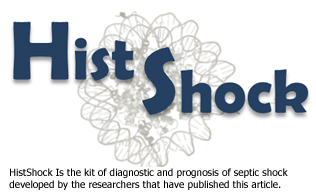
Researchers of the group that leads the Dr. Federico Pallardó in the Facultat of Medicine i Odontologia of the Universitat of València have coordinated a study that has developed a new method based in the technician of the spectrometry of masses to detect histones circulantes H3 and H2B like biomarcadores of precocious diagnostic and prognosis of the septic shock.
The histones are some proteins that free to the bloodstream in the course of a process inflamatorio caused by an infection. His concentration increases as it progresses the sepsis and is very elevated in case of septic shock.
In this study, published in Scientific Reports, analysed samples in plasma of 17 affected by septic shock and 10 healthy controls. It observed that the concentration of histones circulantes H3 and H2B in plasma is significantly greater in the patients. Besides, inside the population of the patients checked that the levels of histones circulantes were a lot of greater in those that did not survive to the septic shock. It confirmed like this his potential like biomarcadores for the diagnostic and prognosis of the evolution of the septic shock.
The sepsis is a negative answer of the organism to a prolonged infection in the time that can derive in septic shock, that between the 30-50% of the cases produces the death of the patients. It is a very grave problem and multifactorial, of difficult diagnostic, and especially grave in boys and elderly. The septic shock causes more than 5 million deaths in the world every year.
In this article, whose first signatories are the Dres. José Luis García-Giménez, researcher of the Facultat and of the Centre of Investigation Biomédica in Network of Rare Illnesses (CIBERER), and Carlos Romá-Mateo, of the Facultat, have participated also researchers of the INCLIVA, the Unit of Intensive Medicine of the University Clinical Hospital of Valencia, the European University of Valencia, the University of Navarra, the Universitat of València and the National Centre of Biotechnology (CSIC).
In the image: HistShock is the kit of diagnostic and prognosis of septic shock developed by the researchers that have published this article.
Article of reference:
A new mass spectrometry-based method for the quantification of histones in plasma from septic shock patients. J. L. García-Giménez, C. Romá-Mateo, N. Carbonell, L. Palacios, L. Peiró-Chova, E. García-López, M. García-Simón, R. Lahuerta, C. Gimenez-Garzó, E. Berenguer-Pascual, M. I. Mora, M. L. Valero, A. Alpízar, F. J. Corrales, J. Blanquer & F. V. Pallardó. Scientific reports. DOI:10.1038/s41598-017-10830-z
Images:











